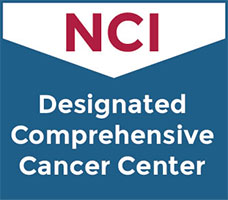Clinical Trials Search at Vanderbilt-Ingram Cancer Center
Genetic Testing to Select Therapy for the Treatment of Advanced or Metastatic Kidney Cancer, OPTIC RCC Study
Kidney (Renal Cell)
Kidney (Renal Cell)
This phase II trial tests whether using genetic testing of tumor tissue to select the optimal treatment regimen works in treating patients with clear cell renal cell (kidney) cancer that has spread to other places in the body (advanced or metastatic). The current Food and Drug Administration (FDA)-approved regimens for advanced kidney cancer fall into two categories. One treatment combination includes two immunotherapy drugs (nivolumab plus ipilimumab), which are delivered by separate intravenous infusions into a vein. The other combination is one immunotherapy drug (nivolumab infusion) plus an oral pill taken by mouth (cabozantinib). Nivolumab and ipilimumab are "immunotherapies" which release the brakes of the immune system, thus allowing the patient's own immune system to better kill cancer cells. Cabozantinib is a "targeted therapy" specifically designed to block certain biological mechanisms needed for growth of cancer cells. In kidney cancer, cabozantinib blocks a tumor's blood supply. The genetic (DNA) makeup of the tumor may affect how well it responds to therapy. Testing the makeup (genes) of the tumor, may help match a treatment (from one of the above two treatment options) to the specific cancer and increase the chance that the disease will respond to treatment. The purpose of this study is to learn if genetic testing of tumor tissue may help doctors select the optimal treatment regimen to which advanced kidney cancer is more likely to respond.
Kidney (Renal Cell)
II
Rini, Brian
NCT05361720
VICCURO21103
Gabapentin & Ketamine for Prevention/Treatment of Acute/Chronic Pain in Locally Advanced Head and Neck Cancer
Multiple Cancer Types
This is a study to establish a safe and feasible dose for prophylactic use of a combination of gabapentin and ketamine in head and neck cancer patients undergoing chemoradiation.
Head/Neck,
Phase I
I/II
Lockney, Natalie
NCT05156060
VICCHNP2173
High-Resolution Specimen PET-CT Imaging for the Intraoperative Visualization of Resection Margins: An Exploratory Study
Miscellaneous
Miscellaneous
Miscellaneous
I
Topf, Michael
VICCHNP24616
Belzutifan/MK-6482 for the Treatment of Advanced Pheochromocytoma/Paraganglioma (PPGL), Pancreatic Neuroendocrine Tumor (pNET), Von Hippel-Lindau (VHL) Disease-Associated Tumors, Advanced Gastrointestinal Stromal Tumor (wt GIST), or Solid Tumors With HIF-2 Related Genetic Alterations (MK-6482-015)
Multiple Cancer Types
This is a study to evaluate the efficacy and safety of belzutifan monotherapy in participants with advanced pheochromocytoma/paraganglioma (PPGL), pancreatic neuroendocrine tumor (pNET), von Hippel-Lindau (VHL) disease-associated tumors, advanced wt (wild-type) gastrointestinal stromal tumor (wt GIST), or advanced solid tumors with hypoxia inducible factor-2 alpha (HIF-2) related genetic alterations. The primary objective of the study is to evaluate the objective response rate (ORR) of belzutifan per response evaluation criteria in solid tumors version 1.1 (RECIST 1.1) by blinded independent central review (BICR).
Endocrine,
Pancreatic
II
Ramirez, Robert
NCT04924075
VICCMD2132
Testing the Addition of an Anti-Cancer Drug, ZEN003694, to the Usual Chemotherapy Treatment (Capecitabine) for Metastatic or Unresectable Cancers
Multiple Cancer Types
This phase I trial tests the safety, side effects, and best dose of ZEN003694 in combination with the usual treatment with capecitabine in treating patients with cancer that has spread from where it first started (primary site) to other places in the body (metastatic) or cannot be removed by surgery (unresectable) and that it has progressed on previous standard treatment. ZEN003694 is an inhibitor of a family of proteins called the bromodomain and extra-terminal (BET). It may prevent the growth of tumor cells that over produce BET protein. Capecitabine is in a class of medications called antimetabolites. It is taken up by cancer cells and breaks down into fluorouracil, a substance that kills cancer cells. Giving ZEN003694 in combination with capecitabine may be safe in treating patients with metastatic or unresectable solid tumors.
Colon,
Phase I,
Rectal
I
Heumann, Thatcher
NCT05803382
VICC-NTPHI23420
Imaging Biomarkers of Lymphatic Dysfunction
Breast
Breast
Persons with secondary arm and/or upper quadrant lymphedema following cancer therapies commonly are prescribed complete decongestive therapy as a course of management of their lymphedema. The investigators will perform a repeated-measures cross-over trial to test the hypothesis that mobilization of protein enriched hardened tissue using graded negative pressure therapy in conjunction with complete decongestive therapy (CDT) is more effective to standard CDT alone for secondary lymphedema management.
Breast
N/A
Donahue, Manus
NCT03760744
VICCBRE18156
A Study of Bleximenib, Venetoclax and Azacitidine For Treatment of Participants With Newly Diagnosed Acute Myeloid Leukemia (AML)
Leukemia
Leukemia
The purpose of this study is to assess how bleximenib and Venetoclax (VEN)+ Azacitidine (AZA) works as compared to placebo and VEN+AZA alone for the treatment of participants with newly diagnosed Acute Myeloid Leukemia (AML) with a mutation in the NPM1 or KMT2A gene.
Leukemia
III
Fedorov, Kateryna
NCT06852222
VICCHEM25012
Accelerated v's Standard BEP Chemotherapy for Patients With Intermediate and Poor-risk Metastatic Germ Cell Tumours
Germ Cell (Pediatrics)
Germ Cell (Pediatrics)
The purpose of this study is to determine whether accelerated BEP chemotherapy is more effective than standard BEP chemotherapy in males with intermediate and poor-risk metastatic germ cell tumours.
Germ Cell (Pediatrics)
III
Borinstein, Scott
NCT02582697
COGAGCT1532
A Clinical Trial of Four Medicines (Elranatamab Plus Carfilzomib and Dexamethasone or Maplirpacept) in People With Relapsed Refractory Multiple Myeloma
The main purpose of the study is to evaluate the safety and tolerability of the combination of elranatamab and carfilzomib and dexamethasone or elranatamab and maplirpacept.
There are 2 parts to this study. Part 1 will evaluate the safety and tolerability of elranatamab when given in combination with carfilzomib plus dexamethasone. Part 2 has 2 arms. The first will evaluate the safety and tolerability of elranatamab when given in combination with maplirpacept. The second will identify the optimal dose(s) of elranatamab plus maplirpacept.
All study medicines are given over 4-week cycles. Everyone taking part in this study will receive elranatamab as a shot under the skin. Participants in Part 1 will also receive weekly carfilzomib as an IV infusion (given directly into a vein) and dexamethasone either by mouth (as a pill) or by IV infusion. Participants in Part 2 will receive elranatamab in combination with maplirpacept as an IV infusion (given directly into a vein)
The investigators will examine the experiences of people receiving the study medicines. This will help determine if the study medicines are safe and can be used for multiple myeloma treatment. Participants will take part in this study for about 2 years after the first dose.
There are 2 parts to this study. Part 1 will evaluate the safety and tolerability of elranatamab when given in combination with carfilzomib plus dexamethasone. Part 2 has 2 arms. The first will evaluate the safety and tolerability of elranatamab when given in combination with maplirpacept. The second will identify the optimal dose(s) of elranatamab plus maplirpacept.
All study medicines are given over 4-week cycles. Everyone taking part in this study will receive elranatamab as a shot under the skin. Participants in Part 1 will also receive weekly carfilzomib as an IV infusion (given directly into a vein) and dexamethasone either by mouth (as a pill) or by IV infusion. Participants in Part 2 will receive elranatamab in combination with maplirpacept as an IV infusion (given directly into a vein)
The investigators will examine the experiences of people receiving the study medicines. This will help determine if the study medicines are safe and can be used for multiple myeloma treatment. Participants will take part in this study for about 2 years after the first dose.
Not Available
I
Baljevic, Muhamed
NCT05675449
VICC-DTPCL23011P
Hypofractionated Radiotherapy Followed by Surgical Resection in the Treatment of Soft Tissue Sarcomas
Sarcoma
Sarcoma
The trial will use neoadjuvant hypofractionated radiotherapy followed by surgical resection in the treatment for soft tissue sarcoma. It will allow patients to be treated over a shorter course (5 or 15 days of radiation) compared to the traditional 5 week regimen. It is proposed that this will be possible without increasing the risk of wound complication or local recurrence compared with a traditional 5 week course of pre-operative radiation.
Sarcoma
II
Shinohara, Eric
NCT04506008
VICCSAR2062


